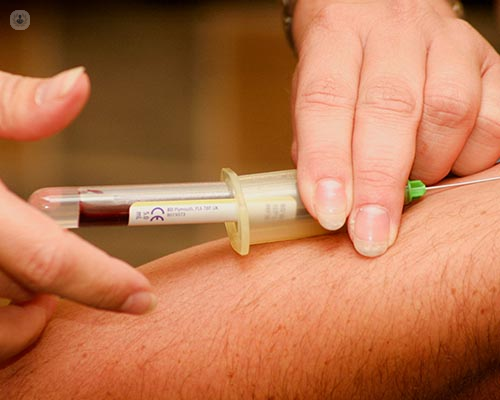Soluble transferrin receptor
What is being analysed?
Soluble transferrin receptor (sTfR) analysis measures the concentration of soluble transferrin receptors in the blood. Transferrin receptors play a crucial role in transporting iron into cells, and their levels can indicate the body's iron status.

What does the result mean?
The result of sTfR analysis provides insights into the body's iron metabolism. Elevated levels of soluble transferrin receptors typically indicate iron deficiency anaemia, whereas decreased levels may suggest adequate iron stores or conditions such as anaemia of chronic disease.
Why do the analysis?
This analysis helps in diagnosing and monitoring iron deficiency anaemia, distinguishing it from other forms of anaemia, and assessing the body's response to iron therapy.
When to do the analysis?
sTfR analysis is recommended when there is suspicion of iron deficiency anaemia, especially in cases where traditional markers like serum ferritin may be unreliable, such as in the presence of inflammation.
What sample is required?
A blood sample is required for sTfR analysis, typically collected from a vein in the arm using standard venipuncture techniques.
Is any type of prior preparation necessary?
No specific prior preparation is necessary for sTfR analysis. However, it is advisable to inform the healthcare provider about any medications or supplements being taken.
How is it used?
sTfR analysis is used in conjunction with other iron studies to assess iron status comprehensively. It provides valuable information for healthcare providers in diagnosing and managing iron deficiency anaemia.
What are the normal values?
Normal values for soluble transferrin receptor concentration may vary depending on the laboratory method used. However, typical reference ranges fall between 0.8 to 1.7 mg/L.
What does it mean to have altered values?
Elevated levels: High levels of soluble transferrin receptor often indicate iron deficiency anaemia. This may be due to inadequate dietary intake, blood loss, or poor absorption of iron.
Decreased levels: Low levels of soluble transferrin receptor are less common but may occur in conditions associated with increased iron stores or erythropoiesis, such as hemochromatosis or polycythemia vera.
Table: Normal Values for Soluble Transferrin Receptor
|
Normal range |
Interpretation |
|
0.8 - 1.7 mg/L |
Typically considered within normal limits |
By analysing soluble transferrin receptor levels, healthcare providers can gain valuable insights into the body's iron status, aiding in the diagnosis and management of iron deficiency anemia and related conditions.